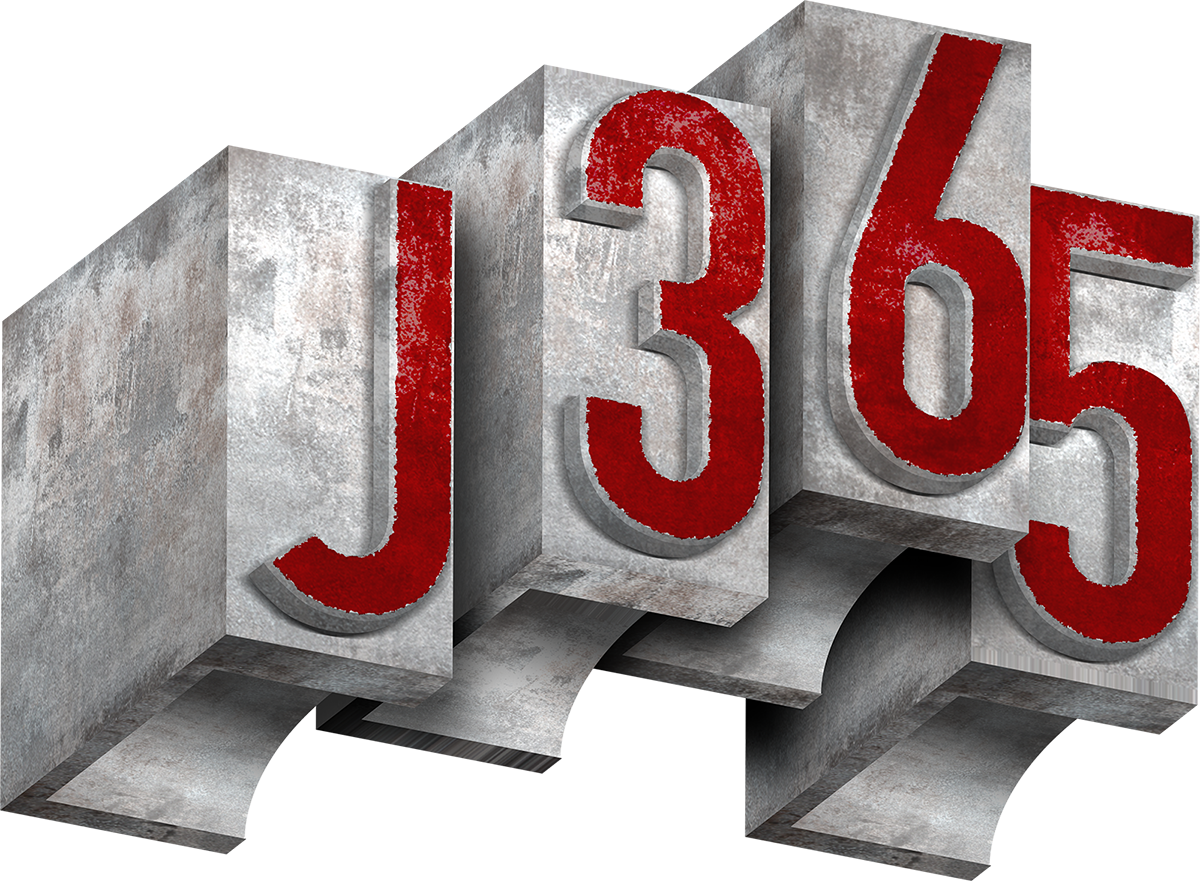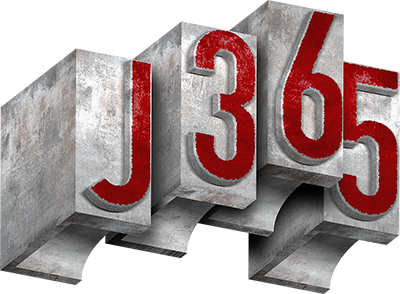
ur class is asynchronous and online this semester. We will have weekly check-ins on Zoom (part of your Participation grade), but otherwise you will arrange your own time to watch pre-recorded videos of our 22 lectures and a number of “how-to” tutorials. These videos will be available through the Kaltura Media Gallery on our Canvas site as well as on YouTube.
Structure
I have arranged the class to mirror a Monday-through-Thursday schedule, with daily deadlines for Participation work. For each class session, there will be a lecture video — usually about 30 minutes — as well as (usually) an assignment. Our six weeks together are divided into six modules, and you should expect to spend at least two full hours of your day in activities related to J365 — as you would if we were meeting in person. Please see the Calendar page for the daily schedule for J365.
Beyond the 22 lecture videos, our daily sessions will include tutorials and/or creative exercises to further your design abilities. Tutorials (T01 through T08) will be accompanied by handouts (and videos). Creative exercises (EX00 through EX08) are a little more open-ended, though a couple of these will have videos, too.
Plan to begin each of our six weeks by attending the weekly Zoom check-in. This is your chance to ask any questions you might have, and I will provide a short overview of the week’s work. Check-ins are a required (and very small) part of your grade, and you can check in via an email message if you prefer.
Videos for each session will be available on the morning they are scheduled on the calendar. Plan on completing each Participation assigment on the day it is assigned. We will conclude each week with a short quiz, which you will take (within a 36-hour window) on Canvas. If you need help outside of the weekly check-in time, write to request a Zoom meeting using the same link as the weekly check-ins. I am in the UK for the first five weeks of our class, but will be back in Bloomington for our final week.
Deadlines
Every session is important to your learning and mastering skills, so make sure you are carefully watching lecture videos and taking notes, and that you are keeping pace with Participation assignments. Missing class sessions is a sure way to lose track of what is happening in class, and falling behind can snowball in a class like ours. Here is an outline of J365’s deadline policy, for each of our three assignment groups.
Participation: Deadlines are the lifeblood of the media world, and blowing deadlines in our business is simply not tolerated. Becuase we will be conducting this class remotely, though, you do have a short grace period for your Participation work: each week’s Participation work can still earn full points as long as it is on Canvas before 11:59PM on the Sunday that follows that week. It’ll be half credit after that, though, and I strongly recommend you keep pace with each week’s assignments.
Projects: Our three major projects, which you will work on throughout each unit, do have hard deadlines, however. I will accept late projects for the first five calendar days after deadline. I will take off 10 percent per day, though, so it’s in your interest to be on time. (An exception to this is the final project, which is due during finals week and cannot be turned in late.) If you are having problems meeting a project deadline, please let me know ahead of time. Projects will be due at 11:59PM on Friday in weeks three, five and six.
Quizzes: Our quizzes will be taken on the last day of each week. They will be fairly short, scored automatically on Canvas, and each will include a somewhat creative bonus question. Quizzes will open Thursday mornings, and you will have to determine the time to complete the quiz within the time that it remains open. Deadline is 11:59PM on Friday. Once closed, quizzes will not re-open. If you cannot take a quiz but have an excused absence — serious illness, religious holiday, death in the family or your attendance of an IU-sanctioned event — please let me know so I can excuse the assignment for you. You must have written documentation for your absence.
Academic integrity
Design is almost always a collaborative process, and I encourage you to seek the advice and input of others — classmates, friends, etc. — along the way. But in this class, all the graphic design material — anything drawn or rendered, any piece of design work — must be 100 percent your own. While I hope you will find influence in many areas, please understand that stealing another person’s ideas or artwork is wrong, it will get you fired in the real world and will not be accepted in this class. This extends to the proper use of imagery as well. During class, we will go through ways in which you can obtain copyright- and royalty-free images to use within a design. Drawing from photographic resources is acceptable, but tracing an existing illustration is not.
Academic misconduct is defined as any activity that tends to undermine the academic integrity of the institution. Violations include: cheating, fabrication, plagiarism, interference, violation of course rules and facilitating academic dishonesty. When you submit an assignment with your name on it, you are signifying that the work contained therein is yours, unless otherwise cited or referenced. Any ideas or materials taken from another source for either written or oral use must be fully acknowledged. All suspected violations of the Code will be reported to the Dean of Students and handled according to University policies. Sanctions for academic misconduct may include a failing grade on the assignment, reduction in your final course grade, and a failing grade in the course, among other possibilities. If you are unsure about the expectations for completing an assignment or taking a test or exam, be sure to seek clarification beforehand.
Materials
I’m assuming that you have a computer that will run Adobe apps (the so-called Big Three — InDesign, Photoshop and Illustrator), but beyond that, there is nothing you will need to buy for this course. I would recommend you keep at hand a sketchbook and some quality pencils. Because we will be learning to draw in Illustrator later in the semester, you might consider a good mouse for your own computer, but this is not required either ... you can draw on a trackpad or with a tablet if you like. There is no textbook either, though there will be a couple of short readings available as PDFs on Canvas. And I'm happy to recommend actual books if you are a book-reading sort of person.
This syllabus
I have mapped out what I believe to be an achievable schedule for this course that will keep everybody working at a steady and challenging pace. Because there are wide variations in your experiences coming in and because we will cover a lot of ground in this class, I reserve the right to amend this syllabus to reflect any shifting realities we may encounter. I will be certain to let you know in advance if and when there will be any changes to deadlines or the schedule.

